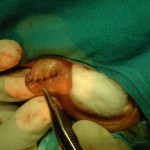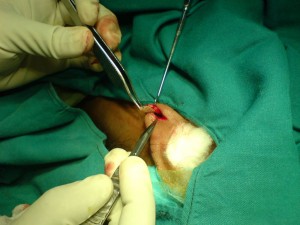BBC http://m.bbc.co.uk/news/uk-wales-22448344
Menu
More from the BBC
BBC News
Sections
Tattooist hygiene grading to launch in Wales by 2014
By Joanna Humphreys
BBC News
10 May 2013 Last updated at 14:18
"Studio floors are mopped down, all waste goes to the council and is burnt as clinical waste"- Ant Ross, tattooist at Redskin Tattoo, Bangor
A voluntary hygiene rating scheme for tattoo studios in Wales, the first of its kind in the UK, is set to be introduced next year.
Tattooists would be awarded hygiene grades to display in studio windows.
The scheme would "boost safety standards" and prevent backstreet tattooists, say the Chartered Institute of Environmental Health (CIEH).
Although voluntary, customers would "draw their own conclusions" if studios opted out, said CIEH.
The issue was discussed at its annual conference in Cardiff.
Under the proposed system hygiene grades of between one and four would be awarded to tattooists.
In early 2014, tattooists will be approached by their local council in Wales and invited to take part.
'Foreign substance'
A CIHE survey showed that 70% of people with a tattoo and 78% of potential customers said a hygiene rating scheme would influence their decision of where to get a tattoo.
Tattooists surveyed said that a hygiene rating scheme would give them a commercial advantage over poor operators and boost the safety image of the industry.
Julie Barratt, director of the CIEH in Wales, said when choosing a safe tattooist, people didn't know what they were looking for.
"You can look at the price, the quality of the artwork and an awful lot of people look at how long they have to wait for an appointment, few people look at the hygiene," she said.
"It's like in a restaurant you look at ambience, menu, choices, you don't think of what happens in the kitchen. When you have a tattoo you are essentially saying to someone: pierce my skin and introduce a foreign substance that will stay there for the rest of my life.
"We're not saying people shouldn't have tattoos, it's lifestyle choice, but if you do have one choose somewhere safe."
'Things go wrong'
"The tattoo world has become so diluted, the best tattooists are the ones who are doing something unique."- Patrick Bates
Dalye Perkins, 23, from Llanharry, has spent around £1,800 on tattoos and his first aged 16 as a post-GCSE present.
He said that the rating system is a good idea.
"You don't know what is going on behind the scenes, you want to walk in and see a certificate on the wall, before having something done first and then finding out [how clean they are].
"I didn't check enough when I had my first tattoo because it was spur of the moment decision. It looked terrible, the lines weren't straight, the picture wasn't right. I had to get it corrected.
"Since that experience I have checked [tattooists] a lot more."
Patrick Bates, 31, from Brighton, has three-quarters of his body covered in ink, including his head and eyelids. He said that if there was a studio with a lower rating than the others he would "reconsider" using it.
"You would hope the studio would have the top rating, if I saw anything less then I wouldn't go there."
Ant Ross, 31, a tattooist at Redskin Tattoo in Bangor, said people should take their time choosing studios.
"First impressions are a massive thing. A studio should smell clean and look clean. Check for mopped floors. We have a hygiene certificate on the desk when you walk in.
Mr Ross described the most common hygiene slip-up in tattooing as leaving gloves on to top-up ink. "That's a big cause of cross contamination, it's so easy to transfer infection. Everything should be disposable apart from the tools themselves.
Mr Ross also said "a rating system would disrupt any bad habits that tattooists had adopted and make them change their routine for the better.
"Some people may be annoyed with changing their routine, but business would go to the better tattooists".
Patrick Bates said he was reconsider using a tattooist if the studio had a lower rating
Share this story About sharing
Email
Facebook
Twitter
More on this story
'Tattoo gave me blood poisoning'
3 May 2013
Tattooist Kevin Paul gives his top five tips
3 May 2013
HIV and hepatitis warning over illegal tattooists
27 April 2013
More Wales stories
April suspect 'did not consider 999'
14 minutes ago
Lightning hits house in thunderstorm
14 minutes ago
Island of monks gets new 999 vehicle
26 minutes ago
Sections
More from the BBC
News
Sport
Weather
iPlayer
TV
Radio
CBBC
CBeebies
Food
Health
Music
Entertainment
Travel
Lottery
Full A-Z
Desktop site
Terms of use
FAQ
Privacy policy
Contact Us
Cookies
BBC © 2013











